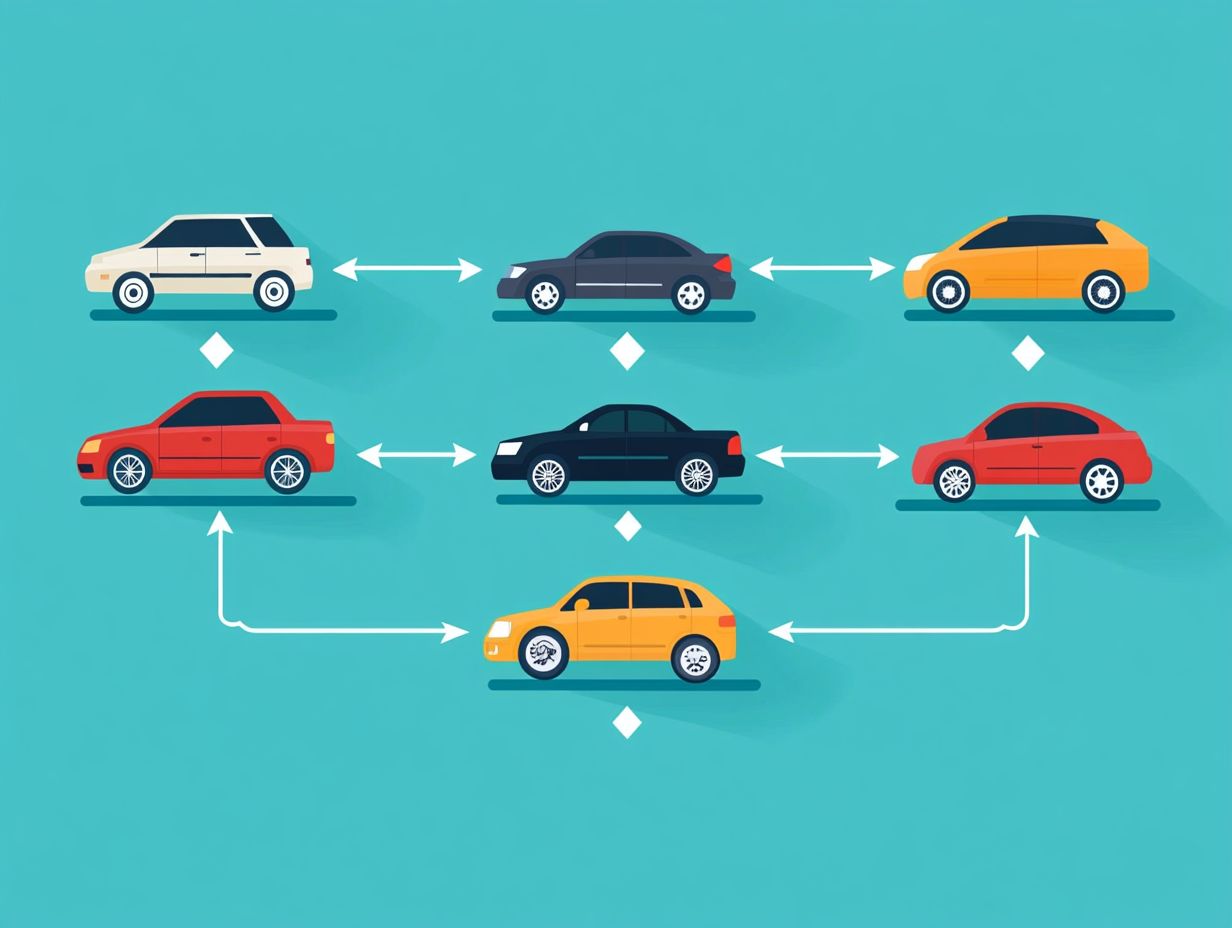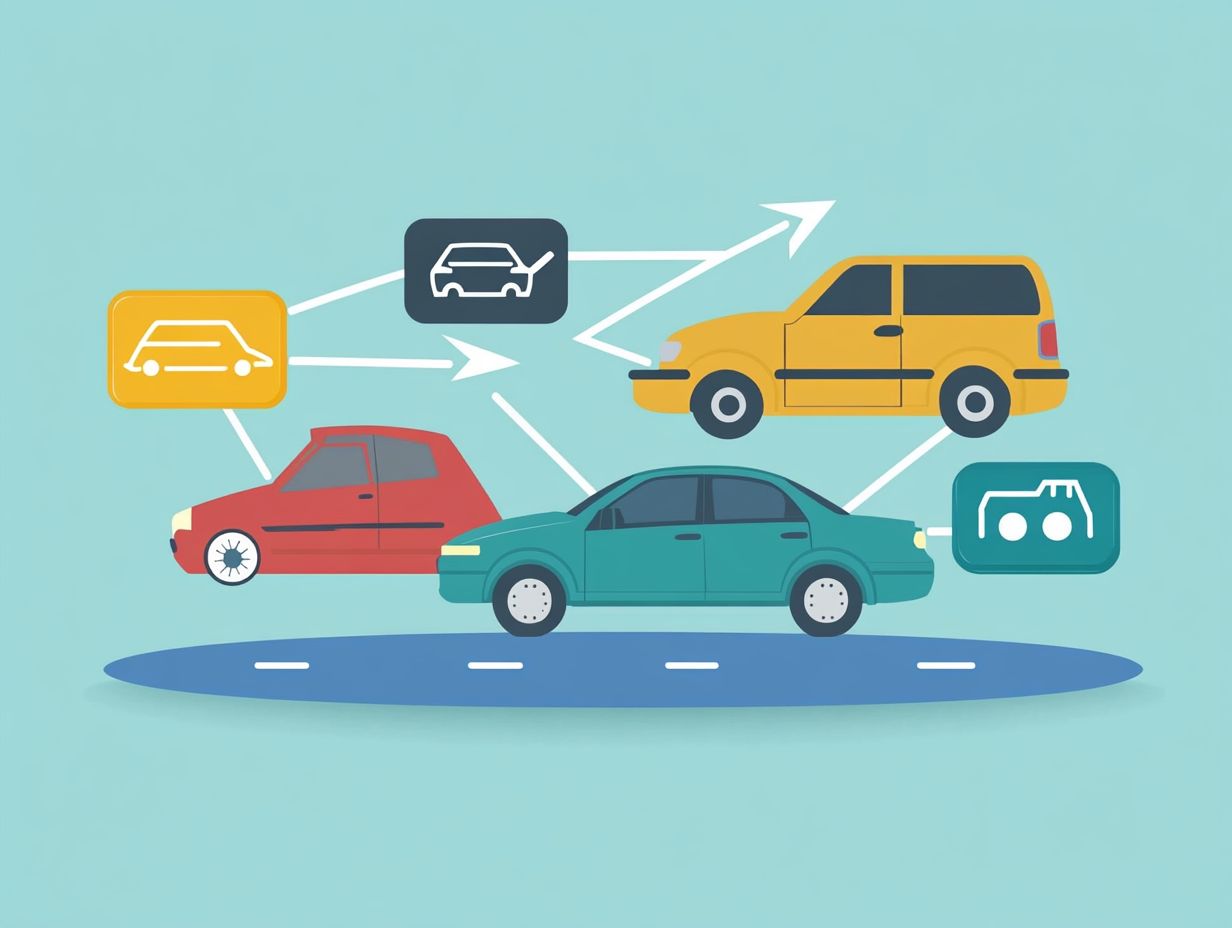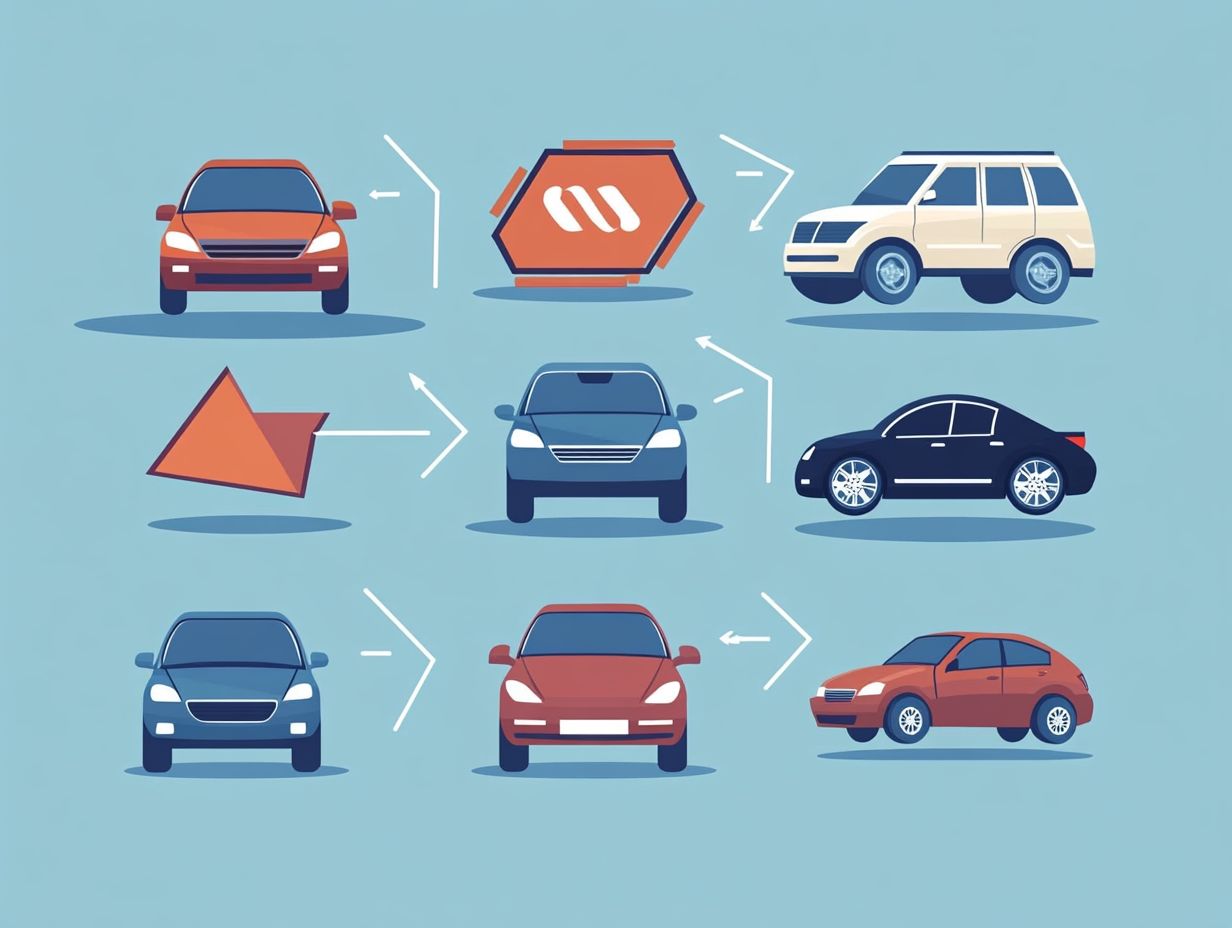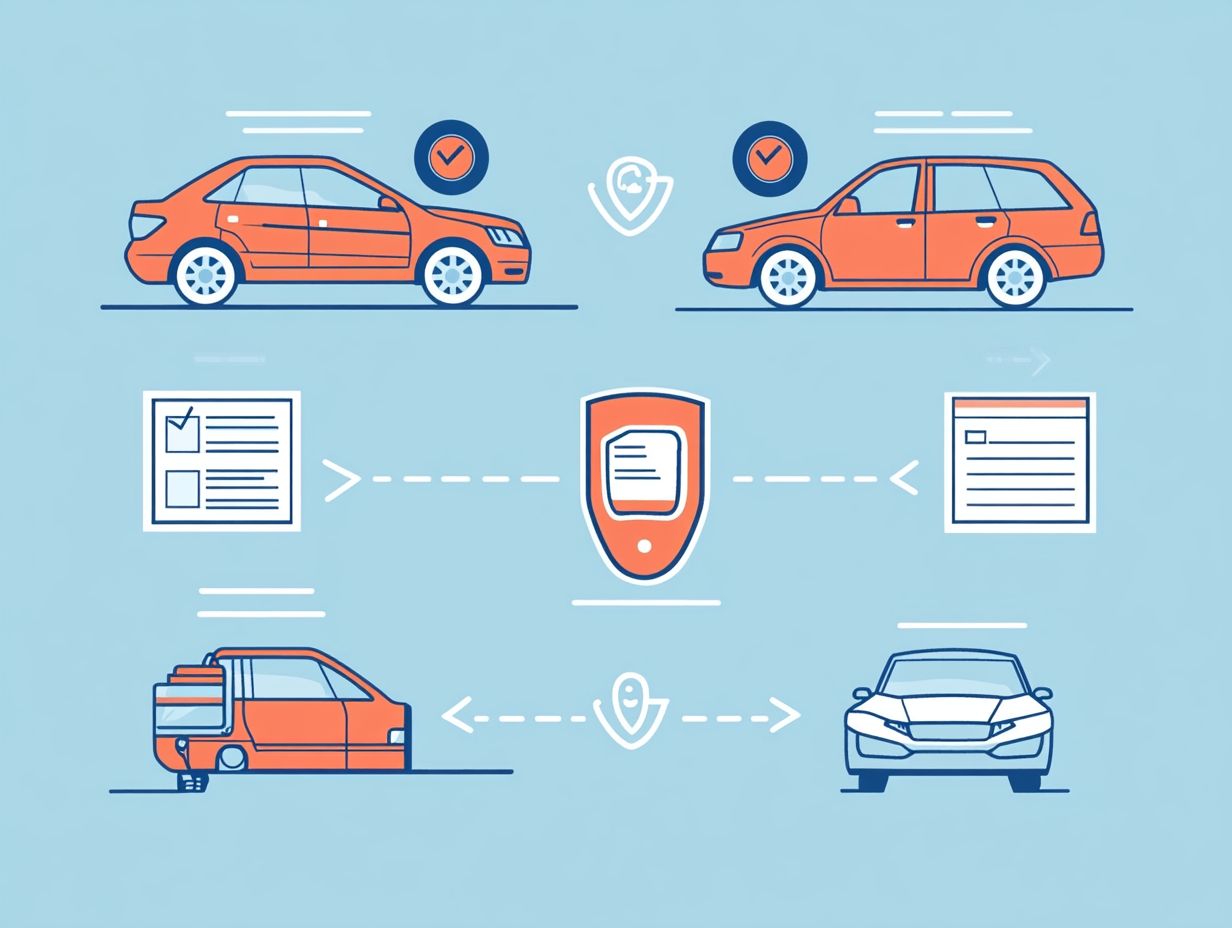Understanding Full Coverage: What’s Included?
Navigating the world of auto insurance can feel overwhelming, especially when you try to understand full coverage. This policy often provides peace of mind, but what does it really include?
This article breaks down the components of full coverage insurance, exploring its benefits while highlighting key considerations before you decide.
We ll also look at the alternatives available to you, ensuring that you have all the information needed to make the best choice for your needs.
Contents
- Key Takeaways:
- What Does Full Coverage Insurance Include?
- Benefits of Full Coverage Insurance
- Considerations Before Choosing Full Coverage
- Alternatives to Full Coverage Insurance
- Frequently Asked Questions
- What is full coverage and what does it include?
- What is the difference between liability and physical damage coverage?
- Does full coverage include coverage for my own injuries?
- What additional coverage options are included in full coverage?
- Are there any restrictions or limitations to full coverage?
- Is full coverage the best option for me?
Key Takeaways:

- Full coverage insurance offers comprehensive protection against unexpected expenses, ensuring financial security.
- This type of insurance usually includes liability, collision, and comprehensive coverage, so consider costs and limits carefully.
- If full coverage isn’t feasible, alternatives like liability or personal injury coverage can still offer essential protection.
What is Full Coverage Insurance?
Full coverage insurance is a comprehensive auto insurance policy that provides you with strong protection. It generally covers various types of protection, such as liability, collision, and comprehensive coverage.
This policy protects you against a wide range of risks, including accidents, theft, and natural disasters. It covers damages to your vehicle and any injuries or damages you cause to others, helping you meet insurance requirements set by states like California and Texas.
Unlike basic insurance that meets only the minimum liability requirements, full coverage protects you from significant out-of-pocket expenses in accidents or vehicle damage. With full coverage, you can drive confidently, knowing your investment is well protected.
This type of insurance also helps protect you from lawsuits, as it often includes coverage against claims that exceed state-required minimums.
In essence, full coverage insurance isn t just about compliance; it is a critical part of risk management for anyone serious about protecting their assets.
What Does Full Coverage Insurance Include?
Full coverage insurance provides a carefully selected combination of essential coverage types, offering comprehensive protection for vehicle owners. This coverage ensures your financial security in various scenarios, including accidents, theft, or natural disasters.
Types of Coverage Included
Full coverage insurance combines essential protection types: liability coverage, collision coverage, and comprehensive coverage. Each is designed to protect you from unexpected financial strains.
Liability coverage is your first line of defense, protecting you from legal fees and damages if you re deemed at fault for an accident. Collision coverage covers repairs to your vehicle after an accident, regardless of fault, easing the financial burden.
Comprehensive coverage protects against non-collision incidents like theft, vandalism, or natural disasters.
Uninsured motorist protection ensures you re covered if the other driver lacks insurance. Personal injury protection covers medical costs for you and your passengers after an accident.
Finally, property damage coverage addresses any damage you cause to someone else’s property, providing peace of mind as you drive.
Benefits of Full Coverage Insurance

The advantages of full coverage insurance are significant. It offers vehicle owners vital financial protection against unforeseen expenses.
This safety net ensures you have peace of mind while navigating the complexities of the road.
Ready to protect your investment? Compare insurance quotes today or consult an agent for personalized advice!
Protection Against Unexpected Expenses
Full coverage insurance acts as a robust safety net, shielding you from unexpected expenses that can arise from accidents, theft, or natural disasters. This effectively minimizes your financial strain.
This type of insurance typically includes both collision and comprehensive coverage, providing a holistic solution that safeguards against various risks. Collision coverage addresses damages from accidents, regardless of fault. Comprehensive coverage protects you from theft, vandalism, and damages caused by events like storms.
The deductible amounts you choose are an important part of your insurance premiums. Opting for higher deductibles usually means lower monthly payments, but it also requires you to cover more out-of-pocket costs before your coverage kicks in. Finding the right balance can help you save money and stay protected!
Considerations Before Choosing Full Coverage
Before selecting full coverage insurance, consider several factors, including associated costs, coverage limits, and how these elements align with your unique insurance needs and financial circumstances.
Understanding Costs and Coverage Limits
Costs and coverage limits are critical elements of full coverage insurance that you need to examine closely. They directly impact both the affordability and the financial protection provided by your policy.
Understanding how insurance premiums and deductibles interact is essential for making informed choices. High premiums can burden your monthly budget. On the other hand, lower deductibles may seem attractive but could lead to higher overall costs when a claim arises.
It’s vital to evaluate your financial situation and ensure that your chosen coverage limits adequately safeguard your assets while remaining manageable within your personal budget. By aligning these variables effectively, you can create a balanced insurance strategy that reduces risks without straining your financial commitments.
Alternatives to Full Coverage Insurance

For vehicle owners, exploring alternatives to full coverage insurance is crucial to achieving the right balance between cost and protection. Various options exist that can offer adequate coverage while still meeting state minimum requirements.
Other Types of Insurance to Consider
Along with full coverage insurance, consider several other options tailored to your unique needs:
- Liability coverage: Shields you from the financial repercussions of damages you may cause to others.
- Comprehensive coverage: Steps in during non-collision-related incidents, such as theft or natural disasters.
- Gap insurance: Covers the gap between your car’s value and the amount you still owe on the loan if your vehicle is totaled.
- Rental car reimbursement: Ensures you have transportation if your vehicle is sidelined due to an accident.
- Roadside assistance: Offers peace of mind with services like towing and tire changes during unexpected roadside issues.
Frequently Asked Questions
What is full coverage and what does it include?
Full coverage refers to a type of car insurance that includes both liability coverage and physical damage coverage. Liability coverage helps pay for damages or injuries you may cause to others. Physical damage coverage helps pay for damages to your own vehicle, providing comprehensive protection.
Don t wait! Review your insurance options now to ensure you re fully protected.
Summary: Full coverage insurance offers essential protection against unexpected expenses, but it’s important to consider costs, coverage limits, and available alternatives, such as understanding what comprehensive coverage is, to tailor your policy to your financial needs.
What is the difference between liability and physical damage coverage?

Liability coverage protects you from responsibility for damages or injuries caused to others. Physical damage coverage protects your own vehicle from damages. Both are typically included in full coverage car insurance.
Does full coverage include coverage for my own injuries?
No, full coverage does not typically include coverage for your own injuries. This type of coverage is known as personal injury protection (PIP) and is usually offered separately from full coverage car insurance.
What additional coverage options are included in full coverage?
Full coverage may include comprehensive coverage. This helps pay for damages from theft or natural disasters.
It may also include collision coverage, which helps pay for damages from collisions with other vehicles or objects.
Are there any restrictions or limitations to full coverage?
Yes, full coverage can have certain limitations or restrictions depending on your insurance policy. For example, there may be a limit to the amount of coverage for certain events or restrictions on the types of vehicles or drivers covered.
Is full coverage the best option for me?
The best type of car insurance for you depends on your individual needs and circumstances. Make sure you explore all your options to find the perfect coverage for your needs and budget!






